History is or should be about perspectives. Just like power and culture are not unidirectional—but multidirectional, so are the histories and not the history of the world.
Yet within a country’s collective history or through the one we each inherit from our home, community or education system, often historical perspectives have been neglected; either unintentionally, a narrative through the one lens or as a form of power or dominance. This inadvertently impacts a person's cultural memory as narratives from different points of power (home, school, media and so forth) intertwine.
Many civilisations have been either forgotten or forwarded to the archeological pages. Technology has helped revive some with 3D printing or through people having their voices heard online and on social media. Where does art stand amongst the notions and questions on memory, culture and history?
The arts have very often been a tool in aiding and displaying multiple historical narratives and voices. Art can cut through a projected dominant cultural power and redirect its intent, balance out what is viewed and project multiple cultural and historical notions.
If we reference Zygmunt Bauman’s theory of liquid modernity, which refers to modernity not being a fixed state, but rather liquid, and thus in a constant state of change, we may then apply Bauman’s concept to the notions of memory, culture and history. In constant state of change or development are also how these notions can be viewed and sensed, in other words, as non static entities.
These non static entities are often accompanied by politics and power. Both history and culture are embedded in our education, our conscious and in our memories and accompany us on our journey of life, thus revisiting notions through art, putting forth multiple perspectives, has been an important aspect for artists, not just to create a sense of equilibrium in the political perception, but to bring forth an arena around belonging and identity.
Exploring these questions, on culture, history, and memory through art, is artist Nicène Kossentini who currently has a solo show at Sabrina Amrani gallery in Madrid entitled ‘Memorising’. An exhibition on a series of artworks based on texts by Arab philosophers, thinkers and poets, such as Ibn Khaldun and Khalil Gibran.

Installation of Memorising by Nicène Kossentini at Sabrina Amrani
The calligraphic texts featured in her artworks such as in the series “History Lessons" are purposely blurred, they disappear into a liquid state, dissolved in water, the ink bleeds like history has so often bled. The words are non-static, they blend themselves into each other, like history and culture can do from one era to the next. Sometimes seemingly not affected by the water, the words are brightened, made slightly visible through the vibrant purple ink.
The artist Nicène Kossentin presents the blurred texts of literature and poetry into visual artistic patterns. Patterns of culture, history and memory adorn the walls of the Sabrina Amrani gallery.
As the artist explores feelings towards cultural memories and what they mean in her artworks, a process of investigation on language, its form and its meaning is at hand, turning art into a language in itself, an abstract artistic landscape of language.
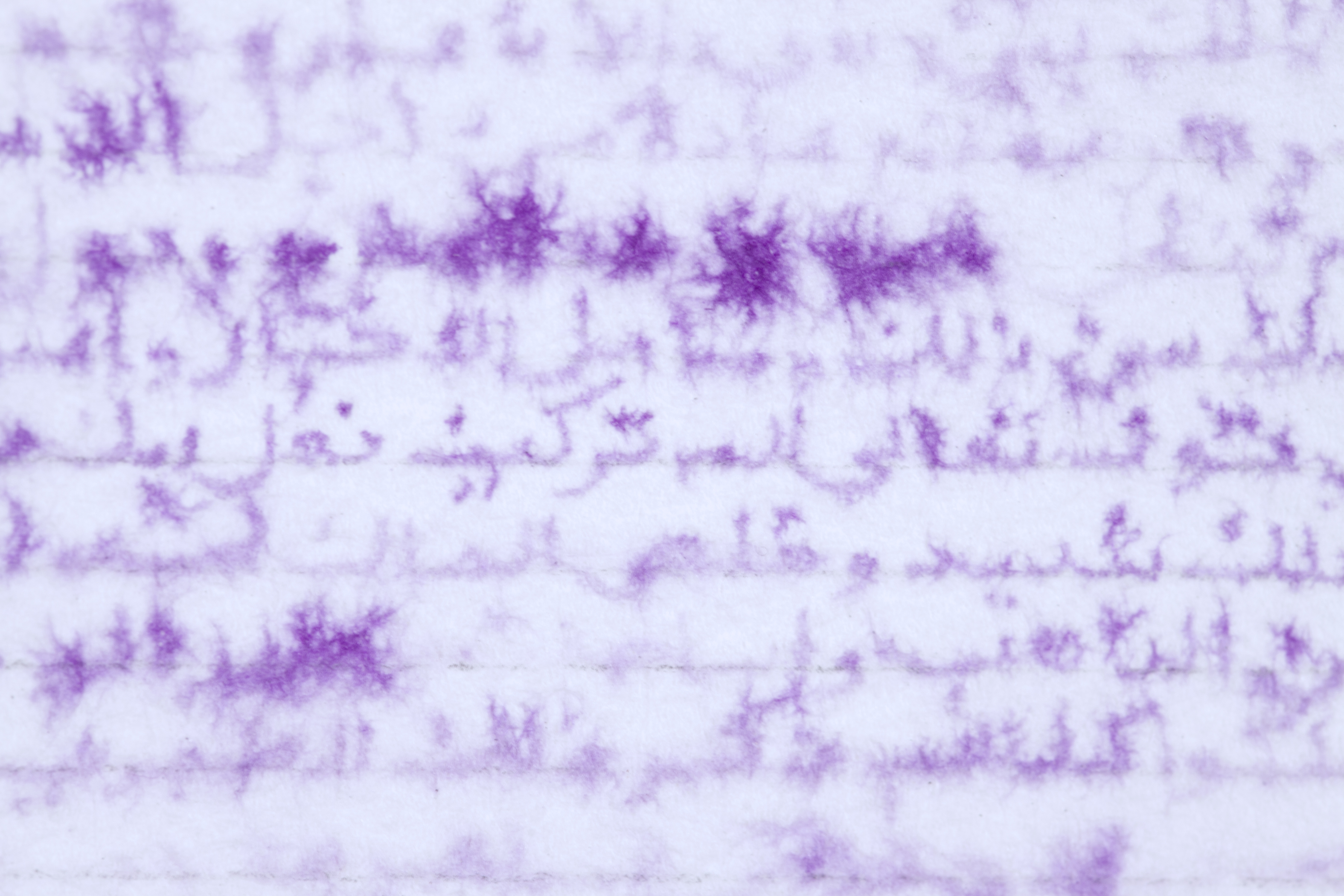
History Lessons 1, 2020, Nicène Kossentini; Ink on paper. 51 x 36 cm
Courtesy of the artist and Sabrina Amrani
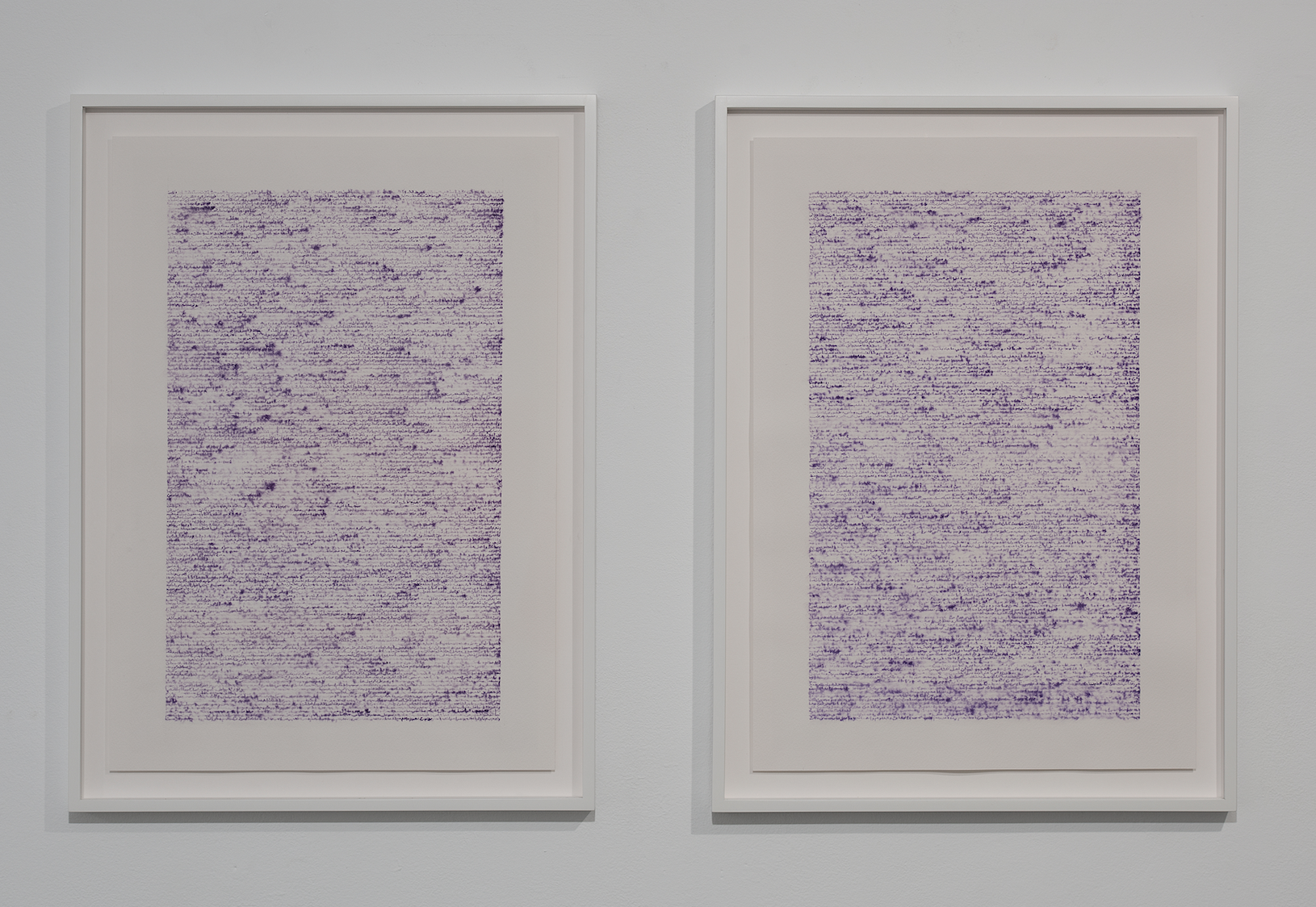
History Lessons 1 and 2, 2020, Nicène Kossentini, Ink on paper. 51 x 36 cm each
Courtesy of the artist and Sabrina Amrani
Poems, words overlap, verses are superimposed, scripts cannot completely be made out, they have though a rhythmic presence, a beautiful aesthetic way, where words are either felt or known, inscribed into the layers of history, the layers of memory and future memories. It is as though the texts take on an artistic life of their own, like waltzes and valses, lines dance into each other. Perhaps diluted and illegible, yet the artworks stand firm, thus the artist renders that a part of history, memory and culture cannot be erased.
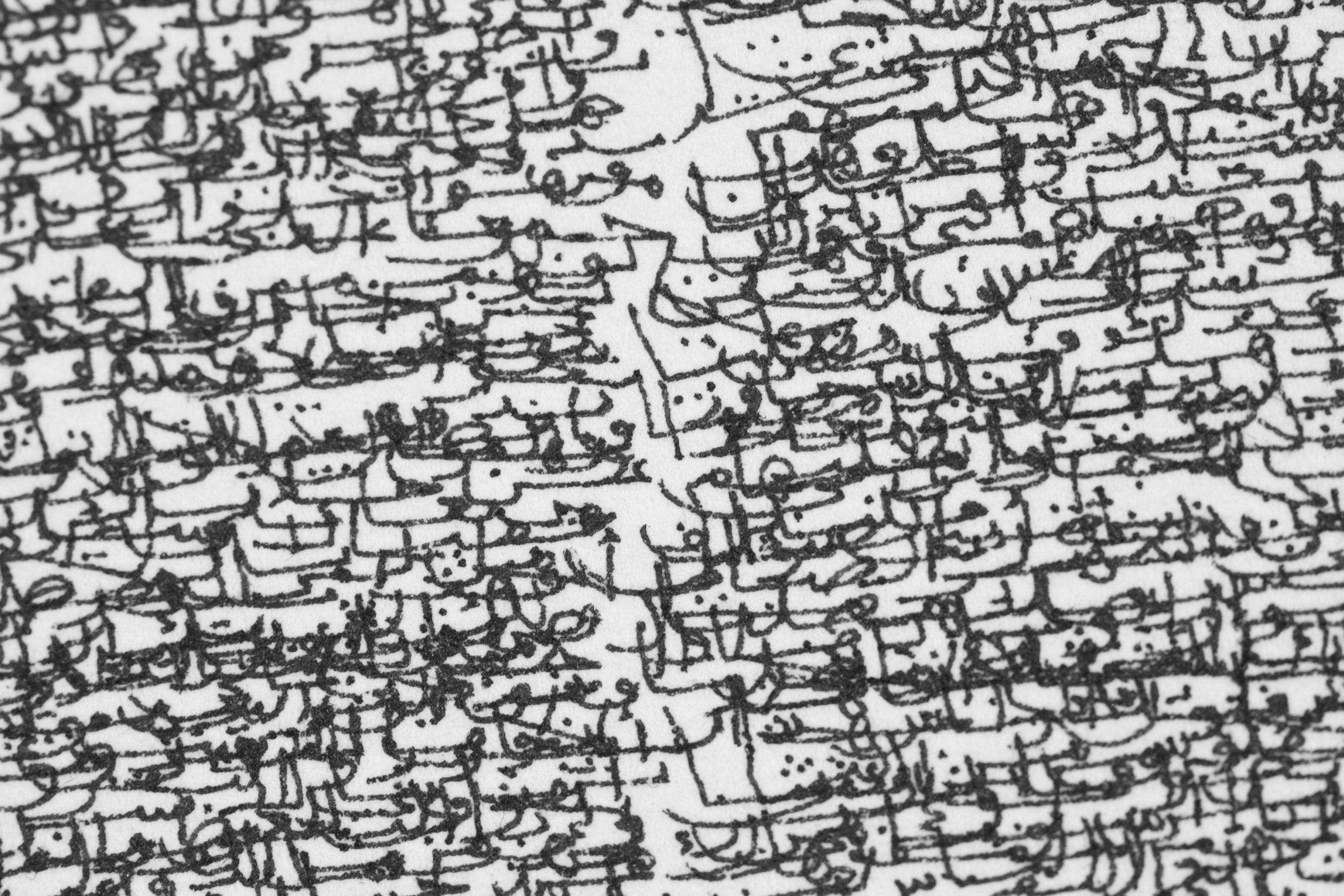
Detail of Poem of Abû Nuwâs, 2020, Nicène Kossentini, Ink on paper. 41 x 31 cm
Courtesy of the artist and Sabrina Amrani
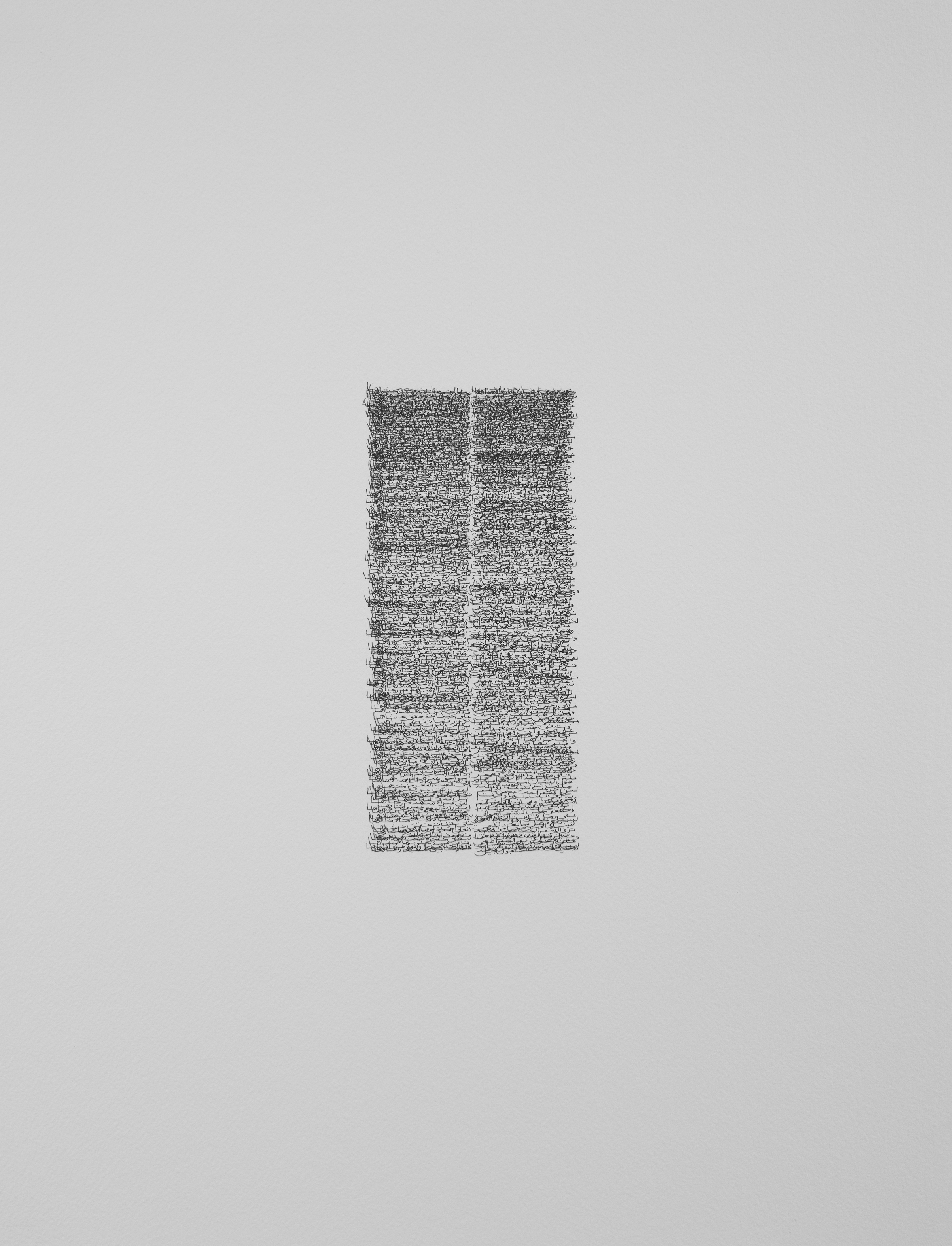
.jpg)
Poem of Al-Khansa and Poem of Al-Ma'arri, 2020, Nicène Kossentini, Ink on paper. 41 x 31 cm each,
Courtesy of the artist and Sabrina Amrani

Detail of Poem of Al-Mutanabbi, 2020, Nicène Kossentini, Ink on paper. 41 x 31 cm
Courtesy of the artist and Sabrina Amrani
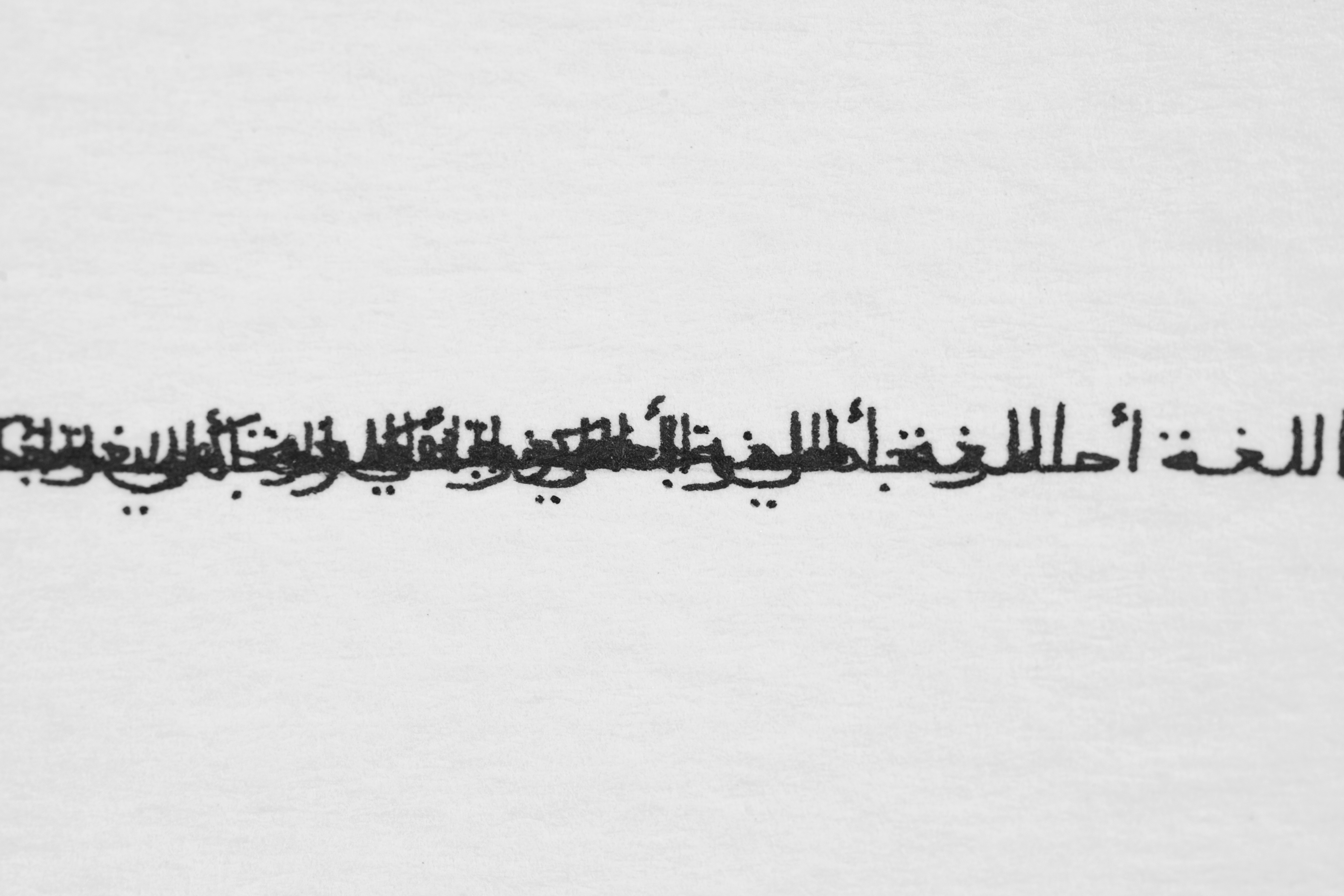
Quotes. Detail of Ibn-Khaldun, Element 2. (triptych), 2020, Nicène Kossentini, Ink on paper. 21 x 90 cm
Courtesy of the artist and Sabrina Amrani
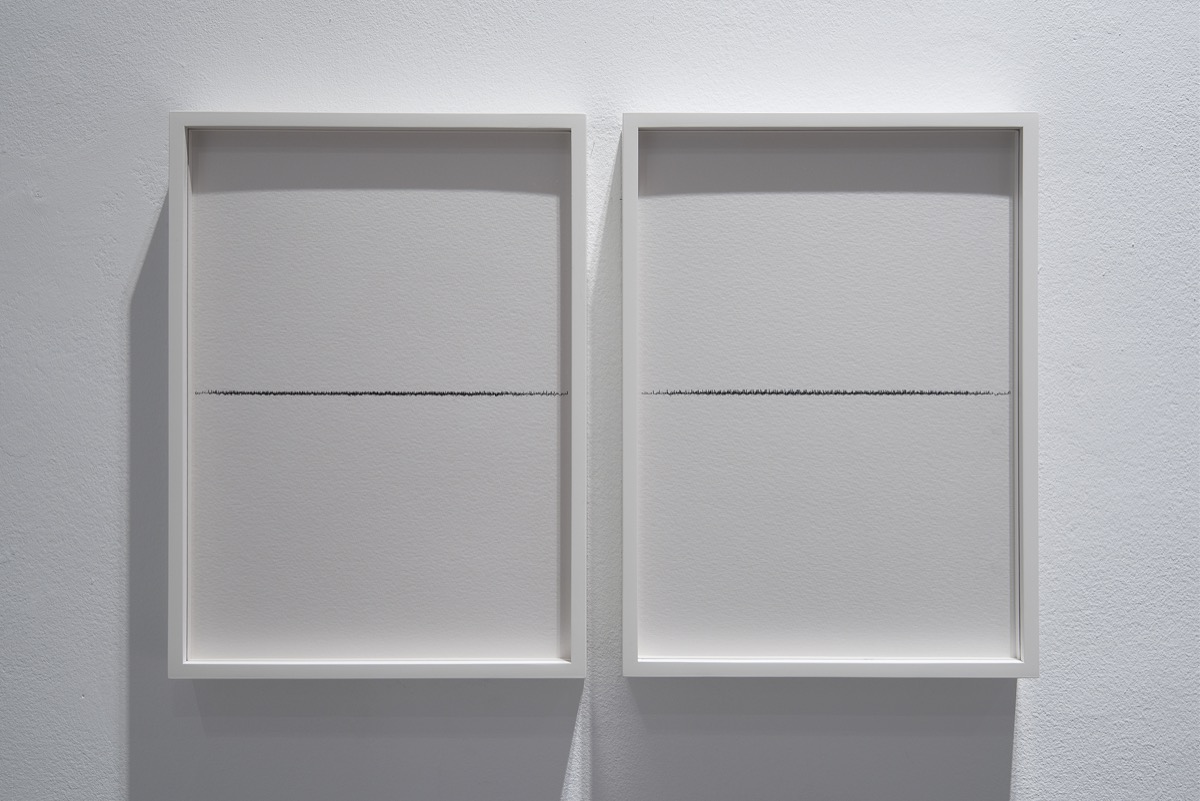
Quotes. Khalil Gibran. Element 1 and 2, (diptych), 2020, Nicène Kossentini, Ink on paper. 21 x 60 cm each
Courtesy of the artist and Sabrina Amrani
Nicène Kossentini's “The School Desk” and "Grammar Lessons", reflect on the artist's concern with education, and the transition of knowledge. As Kossentini explains, “All my learning, the literary and poetic heritage that had been transmitted to me, seemed unrelated to my present”.
"School Desk" showcases calligraphy and texts inscribed on a child’s school desk. This artwork develops thoughts into the direction of thinking about, which perspectives do we learn at school? How have different political powers, governments, colonialism affected education? How does and can heritage relate to the present? What is the value we place on culture and what do our traces mean that we leave behind?
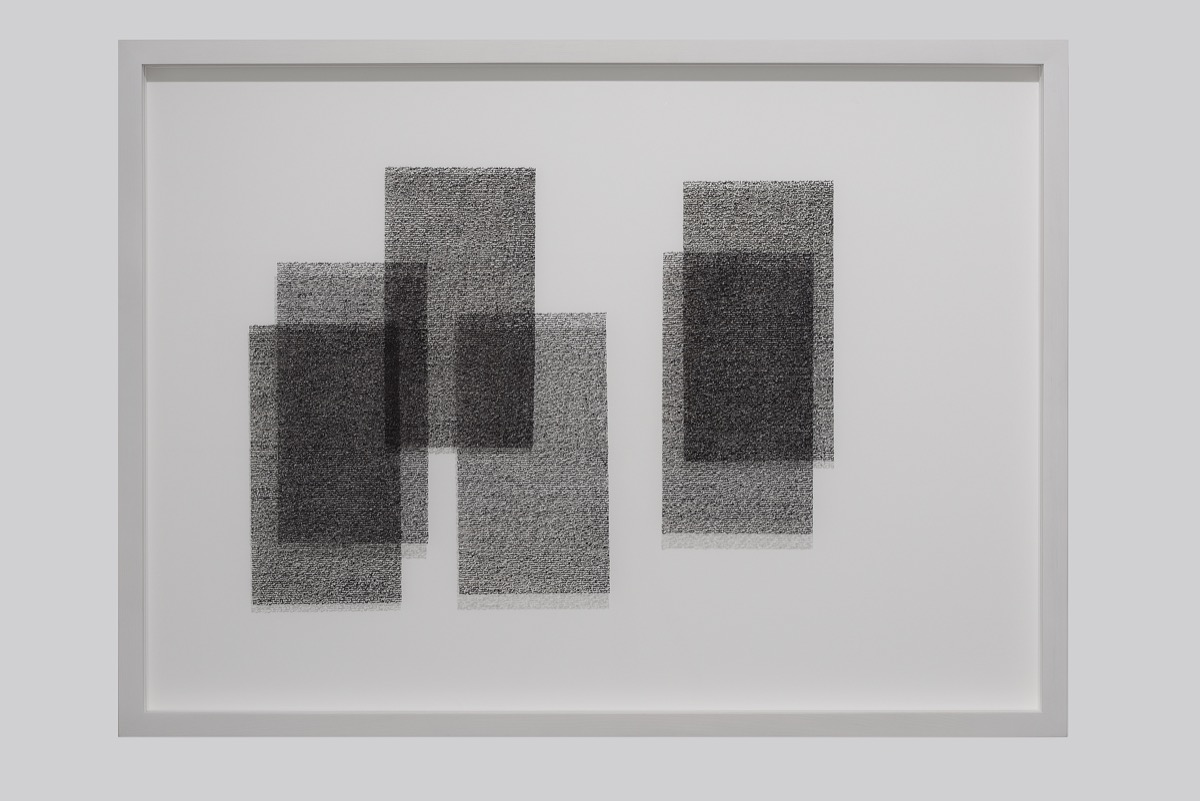
Grammar Lessons-I, 2020, Nicène Kossentini, Ink on glass. 65 x 90 cm
Courtesy of the artist and Sabrina Amrani
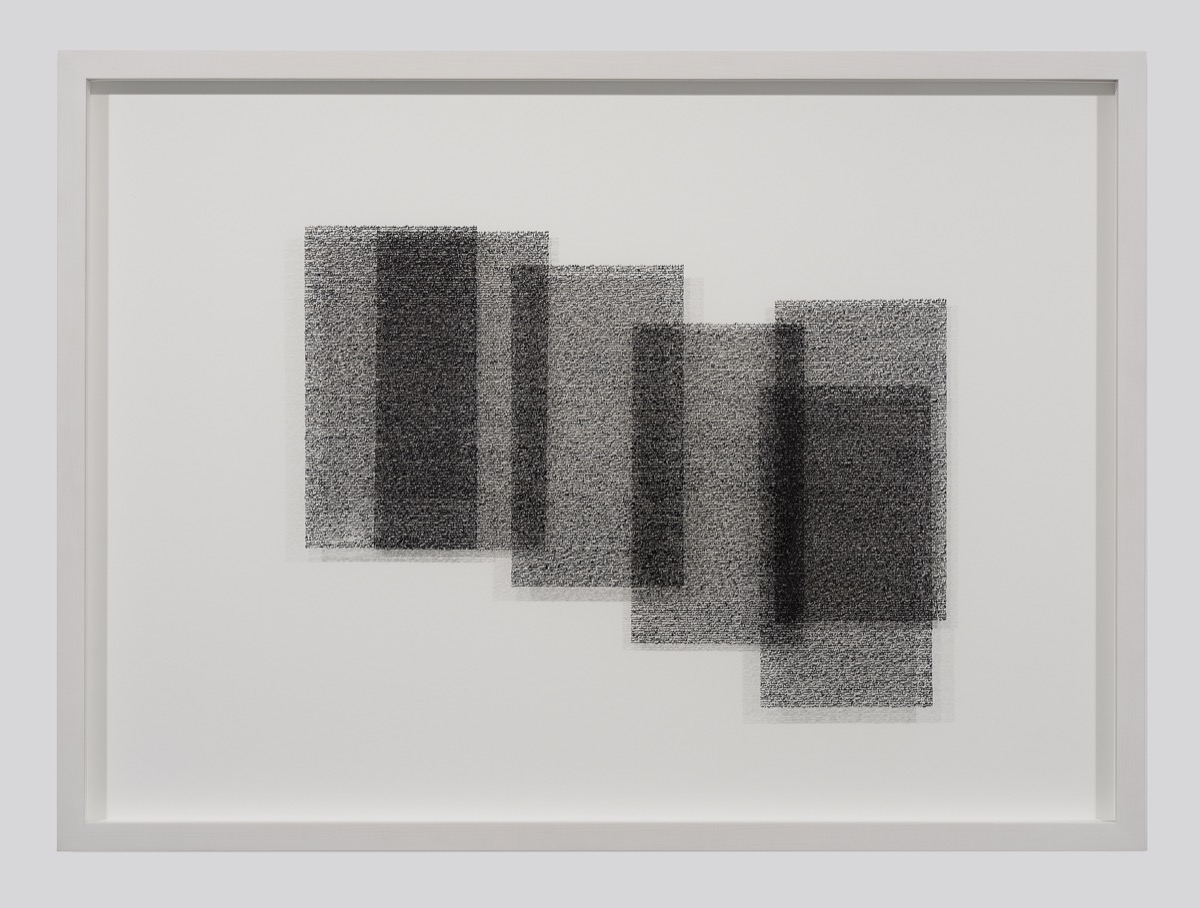
Grammar Lessons III, 2020, Nicène Kossentini, Ink on glass. 65 x 90 cm
Courtesy of the artist and Sabrina Amrani
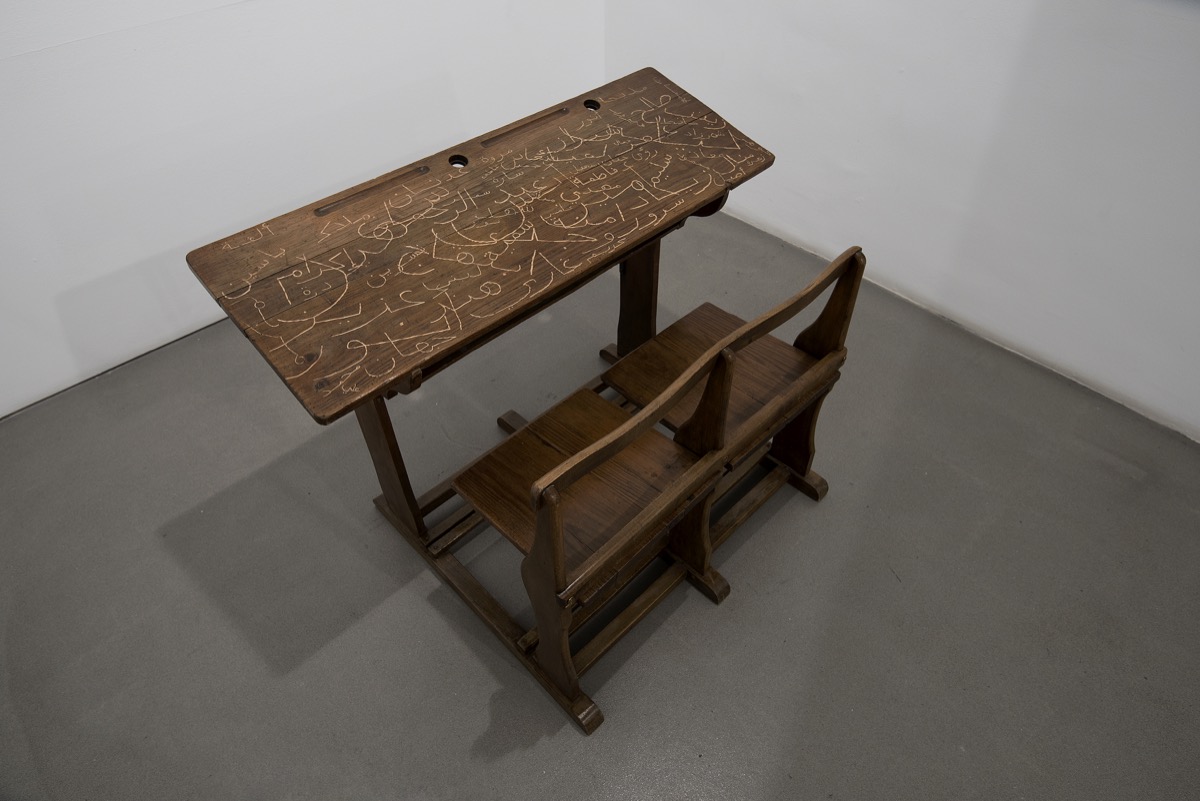
The School Desk, 2020, Nicène Kossentini, Old desk with engravings
Courtesy of the artist and Sabrina Amrani
Kossentini's body of work is concerned with questions of identity, civilisation and history. One of the artist's quest through her art, is to look into the loss of knowledge and the loss of meaning of words. Her artwork's liquid ability to transcend time and space, display knowledge that can be both tangible and intangible, words that survive, and through the power of art, are taken into new dimensions.
Kossentini's work is delicate yet powerful, suggestive yet impactful, words based yet visual, poetic yet political, historical yet present. It fuels thoughts of future memories and patterns of written histories.
Nicène Kossentini studied in the Academy of Fine Arts in Tunis, at the Marc Bloch University in Strasbourg and at the Sorbonne University in Paris. During the first edition of the International Digital Media in France, she was interned at the Studio National des Arts Contemporains Le Fresnoy and at l'École de l'Image Les Gobelins. Currently, she is assistant professor of experimental cinema at the University of Tunis.
Nicène works have been shown all over the world in art galleries and institutions such as Institut du Monde Arabe (France), MUSAC (Spain), Centro de Atlántico de Arte Contemporáneo (Spain), Círculo de Bellas Artes (Spain), Museum of Boulogne Billancourt (France), National Museum of Carthage (Tunisia), Museum of Contemporary art of Algiers (Algeria), Bamako Biennale, Alexandria Biennale, Tunis Biennale and Thessaloniki Biennale.
Her work is present in prominent public collections such as The British Museum, Kamel Lazaar Foundation or the Museum of Modern Art in Tunis, Tunisia.
'Memorising' by Nicène Kossentini, Exhibition on until 16 Jan 2021 at Sabrina Amrani (Calle Madera 23)
All pictures courtesy of the artist and Sabrina Amrani
